#Aaqib Javed
Explore tagged Tumblr posts
Text
'It's the captain and players who...': Pakistan's interim white-ball coach Aaqib Javed makes a big statement | Cricket News - Times of India
Aaqib Javed. (Video Grab) NEW DELHI: Former fast bowler Aaqib Javed, who was recently appointed Pakistan’s interim white-ball coach, on Wednesday commented that while coaches play a role, it is ultimately the captain and players who win matches.He emphasized that leadership on the field and players’ execution are the decisive factors in cricket. His remarks come as he prepares to step into a…

View On WordPress
#Aaqib Javed#Babar Azam#Champions Trophy#jason gillespie#pakistan cricket#Pakistan Cricket Board#t20 cricket#white-ball coach
0 notes
Text
Aaqib Javed appointed Pakistan’s interim white-ball head coach till Champions Trophy

Former fast-bowler Aaqib Javed has been appointed as Pakistan’s interim white-ball head coach till the 2025 Champions Trophy, announced the Pakistan Cricket Board (PCB) on Monday.
Source: bhaskarlive.in
0 notes
Text
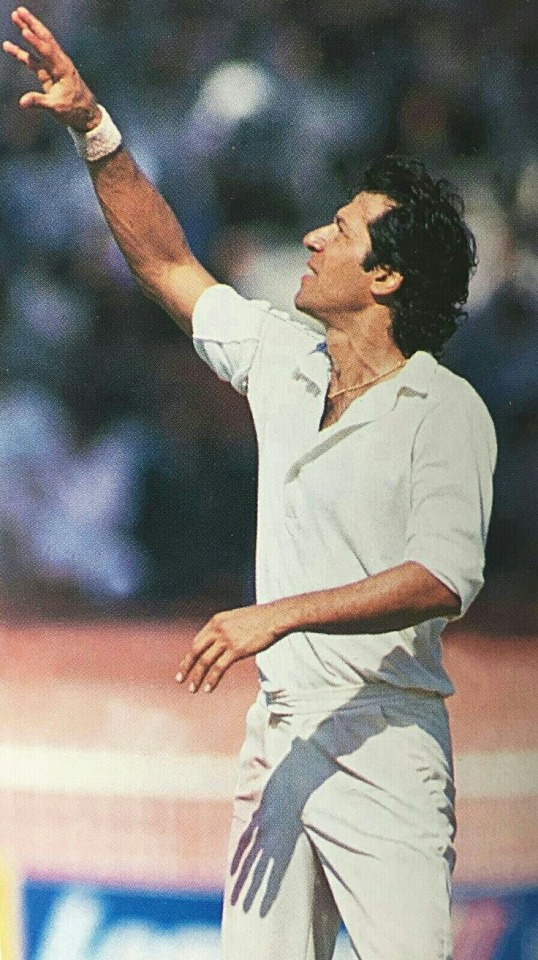

THE WRATH OF KHAN
Imran Khan is indisputably Pakistan’s greatest cricketer. As an all-rounder, he bears comparison with the best there have ever been, a skillful fast bowler and resourceful batsman with a solid defense. But all of them he was a great leader that he really stood out. If you see the history of Pakistan cricket, it shows that Pakistan is a notoriously difficult team to captain.
But he had the massive charisma and stature to unify them and drive them to play above themselves, and that is quite a talent. His finest hour was undoubtedly guiding Pakistan to their first World Cup triumph in 1992, top-scoring with 72 in the final against England at MCG in front of 87k spectators. Although, Imran’s famously imploring his team earlier in the tournament when their hopes hung by a thread to fight ‘like cornered tigers’.
But he has to his name several other outstanding achievements. Imran Khan-led Pakistan to their first Test series wins in both India 1986-87 – obviously a huge thing in his country – and England in 1987. He also led Pakistan to three drawn series in a row against West Indies when West Indies were at the height of their powers. Pakistan, in fact, were the first side to seriously challenge West Indian supremacy.
When they won Test Match at Guyana in 1988, then it was the first time in ten years that West Indies had lost a home Test. The major contribution of Imran Khan when he took 11 wickets in the game. In his career, Imran claimed 80 wickets at 21.18 apiece against West Indies, an incredible record given how strong they were at the time.
He scored some important runs against them too, notably in his final series against West Indies in 1990– 91 when he averaged 50.33 (his overall average against West Indies was 27.67). Imran, who led Pakistan on and off for ten years from 1982 to 1992, mentored some fine players during that period, notably fast bowlers Wasim Akram, Waqar Younis, and Aaqib Javed.
Especially two w’s who swung the ball at pace even greater distances than he did. Imran had the bearing of a leader and for the most part, the players followed. Captaincy elevated his game to a striking degree, averaging 50.55 with the bat and 19.90 with the ball. He turned himself into a considerable bowler with an astonishing record inside Pakistan where visiting fast bowlers tended to find life desperately hard.
Imran himself took 163 wickets at 19.20 apiece there, a better record than he had elsewhere (his overall record was a hugely impressive 362 wickets in 88 Tests at 22.81 each; no one had taken more for Pakistan at the time he retired). Some of the famous players never faced him in Pakistan as he was nursing a stress fracture that prevented him from bowling for the best part of two years when toured therein 1983–84.
England encountered him in 1982 and 1987 and he was a major force both times. In three Tests in 1982, when we were perhaps a little fortunate to win the series 2–1, he scored 212 runs and took 21 wickets. However, he came to England with a passion to beat England in England in 1987. And he led the Pakistan side to do the first time.
In that series, he again took 21 wickets and was the match-winner with the ball in the one game that had a positive outcome at Headingly Leeds. Imran Khan bowling immaculately to take seven for 40 in the second innings. Imran, who was at Oxford in the early 1970s and from there joined Worcestershire, started out as a brisk medium-pacer but through determination and intelligence turned himself into a genuine fast bowler of quality. His two cousins Majid Khan and Javed Burki also led the Pakistan cricket team in the 1960s and 1970s.


Many cricketers remember facing him in one of their earliest games for Leicestershire at around the time he was stepping up his pace. It was the day after David Gower took an early exit from university and we were playing a Benson & Hedges Cup quarter-final at Worcester on a good old New Road pitch with pace and bounce. Gower was caught at slip off him and the ball carried a long way behind me, always a good measure of someone’s speed.
At the age of 18, he made a test debut against England at Edgbaston in 1971 but did not take a permanent place due to below-par performance. Hence, he continued to focus on his education and cricket in England and come back to the side in 1974 on the tour of England.
In county cricket in the period from the mid-1970s to mid-1980s, Imran would have been up there with Mike Procter and Malcolm Marshall as among the best at swinging the ball at pace. Perhaps the thing that completed his education was joining World Series, from which he emerged a far better bowler, learning from watching and working with so many other fine fast bowlers recruited by Kerry Packer. Imran Khan’s charismatic personality and athletic talent made him a popular celebrity all over the world.
In 1976, Imran took 6 for 63 and 6 for 102, for a match figure of 12 wickets to lead his country to 8 wickets win in the 3rdTest at Sydney. This spell surprises the whole Australian team and Pakistani dressing room. Before that match, he was having 9 test matches experience with 25 wickets under his belt with a heavy average of 43.52. Pakistan was trailing 0-1 in the tough series, but Imran’s hostile bowling spell makes Pakistan a marked ascent in the world of cricket.
In 1980, Imran Khan scored 123 runs in the first Test century against the powerful bowling attack of West Indies at Lahore. The years in which he played from 1980 to 1986, on either side of his lay-off for the stress fracture, he was taking his Test wickets at a very cheap cost. In 1982 he returned what remains the best match figures for Pakistan in Tests of 14 for 114 against Sri Lanka in Lahore. The following winter he took an incredible 40 wickets at 13.95 in six Tests against India.
What the Pakistan bowlers, led by Imran and Sarfraz Nawaz, seemed to understand better than everyone else was the mysterious art of swinging the old ball. Therefore, for a batsman, coping with anyone who could move the ball – whether old or new – both ways were always a challenge. You worked hard to get your runs.
The early 1980s was a great era for all-rounders with Imran Khan, Ian Botham, Richard Hadlee, and Kapil Dev all doing great things and rivaling each other for the status of top dog. In the 1987 Cricket World Cup, Khan decided to quit international cricket. But later, the Pakistan public and Zia-ul-Haq the Prime Minister requested him to take back his retirement. He could not reject the public appeal and return to international cricket until 1992.
In terms of bowling, Imran was perhaps consistently the quickest of them. Botham had times where he bowled with the same sort of pace, Hadlee could bowl a sharp delivery if needed but in comparison was slightly down on pace overall, and Kapil was brisker medium than brisk. But they all moved the ball in the air or hit the seam or both, and that was really what made them so difficult to face.
In July 1987, Imran became the first Pakistani bowler to take 300 wickets milestone during the 3rd Test vs England at Lords. If you see the stats, then Imran and Hadlee stood well out in front, averaging around 22 while Botham and Kapil took their wickets at a cost in the high 20s, a reflection really that they were unable to maintain their early brilliance into older age.
Ian Botham probably ranked first as a batsman but Imran, who began his career down the order, developed into a seriously good top-order player and accordingly ended up with six Test hundreds to his name (Botham made 14, Kapil eight, and Hadlee two). Imran kept on improving and became a world-class batsman in all forms.
Indeed, towards the end of his career, he was playing more as a batsman who bowled than a bowler who batted, and when he scored those runs in the 1992 World Cup final, he was batting at number 3. His Test record with the bat was highly respectable, an average of 37.69 comparing well to Botham’s 33.54, Kapil’s 31.05, and Hadlee’s 27.16.
Imran retired from all forms of cricket after winning the 1992 world cup. What gives Imran preeminence in this all-rounder fest is his stature as a leader of a national side that had previously lacked any direction. Since Imran, Pakistan cricket has rarely been stable. Talented players continue to be produced in extraordinary numbers given the absence of a coherent domestic structure.
But it has been engulfed in more than one corruption scandal, while a terrorist attack on a touring Sri Lanka team in 2009 has forced them since to set up a new home in the Middle East. Imran himself has entered politics in the ambitious hope of addressing his country’s many problems. After retirement, he entered politics and outspoken critic of government corruption in Pakistan.
Imran Khan laid the foundation of Pakistan Tehreek-e-Insaf in 1996. Imran Khan started a new journey into Pakistan politics and continued their efforts after badly failing in the 2002, and 2007 elections. Eventually, his efforts bring some happiness to his party becoming a strong candidate for the 2013 elections.
Even in one accident he badly injured his neck and back to falling from a platform at an election campaign rally. Therefore, his braveness in fighting against corruption & poverty won a plurality of seats in the July 2018 elections. Then he became the 22nd prime minister of Pakistan. The first cricketer to be knighted a prime minister of any country.
Imran Khan remains a philanthropist in the public eye. He has a great passion to build a cancer hospital after his mother died of those diseases in 1985. His wish was fulfilled by completing Shaukat Khanum Hospital in Lahore in 1994 named after Khan’s mother.
6 notes
·
View notes
Text
Jason Gillespie steps down as Pakistan head coach; Aaqib Javed steps in
Lahore: Jason Gillespie stepped down from his role as Pakistan’s Test team coach and former pacer Aaqib Javed has replaced the Australian for the upcoming two-match series against South Africa, PCB announced Thursday. Pakistan will play two Tests against the Proteas from December 26, and they are already in the Rainbow Nation for the white-ball leg of the tour. Aaqib is currently the interim…
0 notes
Text
[ad_1] Dennis Lillee and Jasprit Bumrah (PC: ICC and BCCI) The host broadcaster’s stump mic in Perth has unhindered clarity unlike the occasionally sparse visuals during replays that nipped a promising KL Rahul’s innings in the bud. As Steve Smith arrived at the crease, Rishabh Pant was in his element. “The legend is pressured,” chirped the Indian wicketkeeper. A ball later, Smith was gone. Jasprit Bumrah made one jag back a mile to trap the former Australia captain leg-before. The stand-in India captain was making the ball talk. In the commentary box, Wasim Akram was ecstatic. “He (Bumrah) is the world’s best bowler,” the legendary former Pakistan quick screamed. That was validation. Bumrah is placed third in the ICC Test bowling rankings, behind Kagiso Rabada and Josh Hazlewood. Who cares! To paraphrase Mark Knopfler, he was giving the Australian batsmen a shiver in the fading light at the Optus Stadium. It felt like he had Smith at his beck and Marnus Labuschagne at his call. The fabled WACA is just a short walk from the Optus Stadium. It is the spiritual home of Dennis Lillee. It’s not known if the great man paid a visit to the new stadium to watch the first day’s play of the first Test between India and Australia. Even watching the action on telly, he must have nodded in approval, notwithstanding his nationality and a redoubtable Aussie swagger. It’s a fast bowlers’ club where Bumrah sits cheek by jowl with the likes of Lillee, Akram, Malcolm Marshall and other all-time greats of the game. For the Latest Sports News: Click Here Jasprit Bumrah during the Perth Test (PC: Debasis Sen) Back in 2018, during Bumrah’s first Test series Down Under, Lillee had compared the Indian speedster with Jeff Thomson. “He (Bumrah) is very different from other pacers, which reminds me of another fast bowler of my era, who was very different from everyone else – Jeff Thomson,” Lillee had said. In Perth, as he was making bowling feel like music, Bumrah’s action was dissected by the experts. As awkward as it might be, there’s no faux shtick in the whole process – from his run-up to loading, delivery and follow-through. Bumrah’s wrist does the magic. “What Bumrah does is 101 per cent correct,” former Pakistan fast bowler Aaqib Javed, who is currently a selector and Pakistan’s white-ball coach, told this correspondent a few years ago. “Don’t look into how he is approaching the crease. Look at the end product and that’s perfect. Very few fast bowlers use the height so well. Very few of them transfer weight so smoothly. Also, from his run-up to delivery release, Bumrah’s entire approach is completely linear, using his energy in a straight direction. It gives him more power. To me, he has the best action in the business.” Coming back to Lillee, watching Bumrah, maybe his mind raced back to a time when India had Kapil Dev and a few other medium pacers around him, bowling dibbly-dobblies. The Australian was given the responsibility to groom fast bowlers at the MRF Pace Foundation. It took time, a couple of generations to be precise. But Lillee and the MRF Pace Foundation’s influence wasn’t limited to Chennai only. Bumrah is the fulcrum of a process that started with Javagal Srinath followed by Zaheer Khan and other fast bowlers. But no one is like the smiling assassin, for he is one of a kind. Bumrah is someone whom Andy Roberts told: “You could have taken the new ball in our XI.” Also Read: How a Durga Puja gave India’s Test team its Bumrah X-factor The post Close to Lillee’s spiritual home, Bumrah sings merry song of fast bowling appeared first on Sports News Portal | Latest Sports Articles | Revsports. [ad_2] Source link
0 notes
Text
[ad_1] Dennis Lillee and Jasprit Bumrah (PC: ICC and BCCI) The host broadcaster’s stump mic in Perth has unhindered clarity unlike the occasionally sparse visuals during replays that nipped a promising KL Rahul’s innings in the bud. As Steve Smith arrived at the crease, Rishabh Pant was in his element. “The legend is pressured,” chirped the Indian wicketkeeper. A ball later, Smith was gone. Jasprit Bumrah made one jag back a mile to trap the former Australia captain leg-before. The stand-in India captain was making the ball talk. In the commentary box, Wasim Akram was ecstatic. “He (Bumrah) is the world’s best bowler,” the legendary former Pakistan quick screamed. That was validation. Bumrah is placed third in the ICC Test bowling rankings, behind Kagiso Rabada and Josh Hazlewood. Who cares! To paraphrase Mark Knopfler, he was giving the Australian batsmen a shiver in the fading light at the Optus Stadium. It felt like he had Smith at his beck and Marnus Labuschagne at his call. The fabled WACA is just a short walk from the Optus Stadium. It is the spiritual home of Dennis Lillee. It’s not known if the great man paid a visit to the new stadium to watch the first day’s play of the first Test between India and Australia. Even watching the action on telly, he must have nodded in approval, notwithstanding his nationality and a redoubtable Aussie swagger. It’s a fast bowlers’ club where Bumrah sits cheek by jowl with the likes of Lillee, Akram, Malcolm Marshall and other all-time greats of the game. For the Latest Sports News: Click Here Jasprit Bumrah during the Perth Test (PC: Debasis Sen) Back in 2018, during Bumrah’s first Test series Down Under, Lillee had compared the Indian speedster with Jeff Thomson. “He (Bumrah) is very different from other pacers, which reminds me of another fast bowler of my era, who was very different from everyone else – Jeff Thomson,” Lillee had said. In Perth, as he was making bowling feel like music, Bumrah’s action was dissected by the experts. As awkward as it might be, there’s no faux shtick in the whole process – from his run-up to loading, delivery and follow-through. Bumrah’s wrist does the magic. “What Bumrah does is 101 per cent correct,” former Pakistan fast bowler Aaqib Javed, who is currently a selector and Pakistan’s white-ball coach, told this correspondent a few years ago. “Don’t look into how he is approaching the crease. Look at the end product and that’s perfect. Very few fast bowlers use the height so well. Very few of them transfer weight so smoothly. Also, from his run-up to delivery release, Bumrah’s entire approach is completely linear, using his energy in a straight direction. It gives him more power. To me, he has the best action in the business.” Coming back to Lillee, watching Bumrah, maybe his mind raced back to a time when India had Kapil Dev and a few other medium pacers around him, bowling dibbly-dobblies. The Australian was given the responsibility to groom fast bowlers at the MRF Pace Foundation. It took time, a couple of generations to be precise. But Lillee and the MRF Pace Foundation’s influence wasn’t limited to Chennai only. Bumrah is the fulcrum of a process that started with Javagal Srinath followed by Zaheer Khan and other fast bowlers. But no one is like the smiling assassin, for he is one of a kind. Bumrah is someone whom Andy Roberts told: “You could have taken the new ball in our XI.” Also Read: How a Durga Puja gave India’s Test team its Bumrah X-factor The post Close to Lillee’s spiritual home, Bumrah sings merry song of fast bowling appeared first on Sports News Portal | Latest Sports Articles | Revsports. [ad_2] Source link
0 notes
Text
#DiljitDosanjh#Gujarat#DryState#AlcoholBan#Telangana#IndianArtistes#Bollywood#Youth#Censorship#DoubleStandards#DilLuminatiTour#Lemonade#5Tala#Chamkila#Hypocrisy#MusicAndPolitics#PunjabiPop#ArtistFreedom#GovernmentInterference
0 notes
Text
After Gary Kirsten, Will PCB Selector Become Pakistan's White-Ball Coach? This is what the report says
Current senior selectors Aaqib Javed and former spinner Saqlain Mushtaq are vying to replace Gary Lange as Pakistan’s new white ball coach after the former Proteas hitter resigned owing to disagreements with the country’s cricket management. The PCB officially acknowledged Kirsten’s resignation on Monday, and as an interim measure, it has requested Jason Gillespie, the red ball coach, to manage…
0 notes
Text
Inside the Exciting Encounter: PCB Chief Convenes with Ex-Players for a Revolutionary Plan to Uplift our Ailing National Team, Reveals Insider Report!
Pakistan Cricket Board Chief Zaka Ashraf is seeking advice from former Test players following the national team’s poor performance in the ongoing World Cup in India. Ashraf met with Pakistan chief selector Inzamam ul Haq, as well as former players Muhammad Yousuf and Aaqib Javed in Lahore on Tuesday. He also has plans to consult with cricket stalwarts such as Wasim Akram, Waqar Younis, Saqlain…
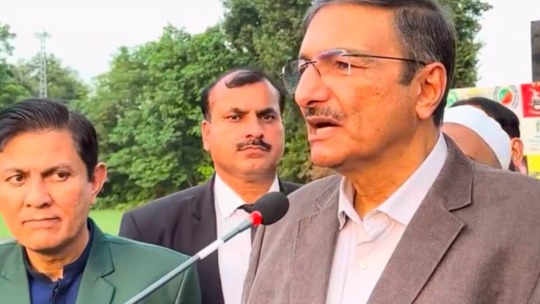
View On WordPress
0 notes
Text
Inside the Exciting Encounter: PCB Chief Convenes with Ex-Players for a Revolutionary Plan to Uplift our Ailing National Team, Reveals Insider Report!
Pakistan Cricket Board Chief Zaka Ashraf is seeking advice from former Test players following the national team’s poor performance in the ongoing World Cup in India. Ashraf met with Pakistan chief selector Inzamam ul Haq, as well as former players Muhammad Yousuf and Aaqib Javed in Lahore on Tuesday. He also has plans to consult with cricket stalwarts such as Wasim Akram, Waqar Younis, Saqlain…
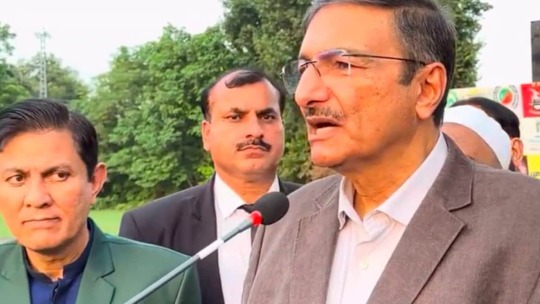
View On WordPress
0 notes
Text
Inside the Exciting Encounter: PCB Chief Convenes with Ex-Players for a Revolutionary Plan to Uplift our Ailing National Team, Reveals Insider Report!
Pakistan Cricket Board Chief Zaka Ashraf is seeking advice from former Test players following the national team’s poor performance in the ongoing World Cup in India. Ashraf met with Pakistan chief selector Inzamam ul Haq, as well as former players Muhammad Yousuf and Aaqib Javed in Lahore on Tuesday. He also has plans to consult with cricket stalwarts such as Wasim Akram, Waqar Younis, Saqlain…
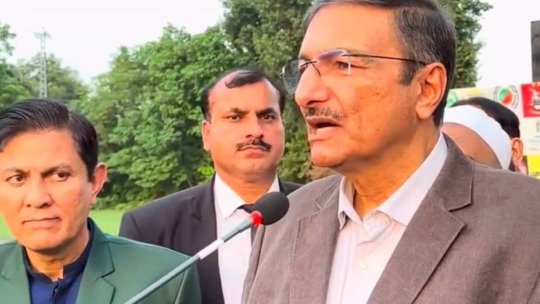
View On WordPress
0 notes
Text
Here’s Why Aaqib Javed Believes Babar is Better than Kohli
http://dlvr.it/Stvfzv
0 notes
Text
Here’s Why Aaqib Javed Believes Babar is Better than Kohli
http://dlvr.it/StvbSl
0 notes
Text
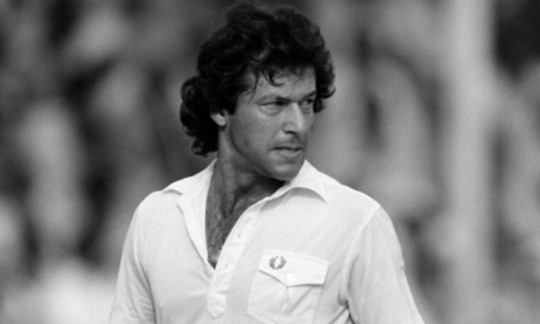
IMRAN KHAN AS 'KAPTAAN'
The decision to make Imran Khan the captain of the Pakistan cricket team in 1982 took a lot of people by surprise.
Known more as a flamboyant fast-bowler/bowling all-rounder and ‘playboy,’ nobody quite expected him to ever lead the national cricket team. Not even Imran himself.
When Javed Miandad was ousted by a players’ rebellion, he was expected to be replaced by either Zaheer Abbas or Majid Khan.
But since Majid and Zaheer were the central figures in the rebellion against him, Miandad (after resigning from the captaincy), made it clear to the cricket board that he was not willing to play under either of the two aspirants.
The board came up with a compromise candidate in the shape of Imran Khan. Khan was reluctant. His close friends warned him that captaincy would destroy his career and form.
Nevertheless, after some thought, Khan accepted. Quite the opposite happened to his career and form. Not only did he win 7 of the first 12 Tests that he captained, his form as all-rounder also reached a peak.
With his performances he was able to quickly gain the respect of his teammates and successfully weave a fragmented side into a tightly-knit unit. However, in 1983 he suffered a career-threatening stress fracture in one of his shins that prevented him from bowling.
He tried to hang on as a batsman and captain, but couldn’t help arrest the team’s sudden decline. He finally decided to take a break from the game and heal his fracture.
When he returned to the team in 1985, Miandad was once again the captain but he voluntarily handed over the captaincy to Khan.
Khan’s second stint as skipper was equally successful but at the same time a lot more controversial.
After reestablishing himself in the team as its premier all-rounder and captain, Khan began to exercise an almost dictatorial hold over the team and regularly clashed with the selectors and members of the board.
He claimed that since it was the captain’s head that lands on the chopping block when the team does not do well, the captain should have the most say in selecting the team.
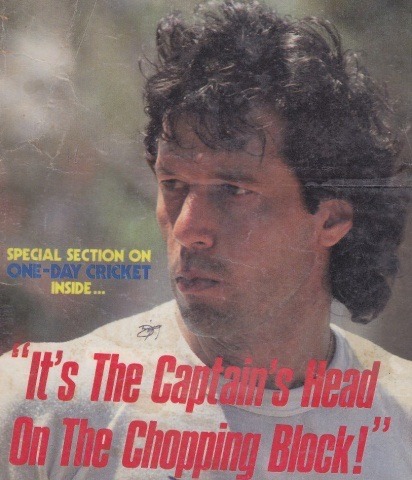
Khan would often throw away and reject touring squads selected by the selectors, and refuse to play if his recommendations were not entertained in selection matters. This attitude bore both fruit and frustration.
For example, he fought hard with the board to get in players like Abdul Qadir (who would go on to become a world-class spinner). He also dotingly nurtured fast men like Wasim Akram, Waqar Younis and Aaqib Javed who went on to lead a fast-bowling revolution in Pakistan in the 1990s.
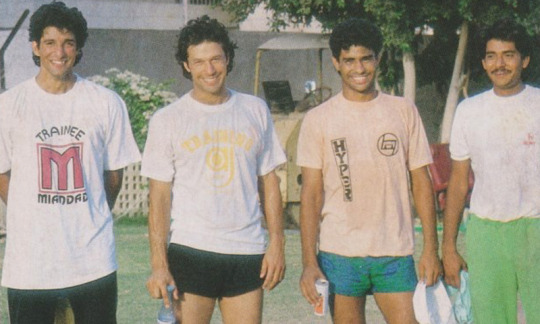
The board could not do much about Khan’s tantrums as long as he had the backing of the team, was performing well as a player, and producing unprecedented victories.
For example, it was under Imran that the team notched its first ever Test series wins against England (in England) and against India (in India) – both in 1987.
No player, except his vice-captain, Javed Miandad, dared disagree with him, and the selectors and board officials mostly did what he told them to.
He would also often exhibit his anger on the field at players he thought weren’t giving their all, and the spectacle of Khan admonishing players with some choice Urdu and English abuses became a common sight.

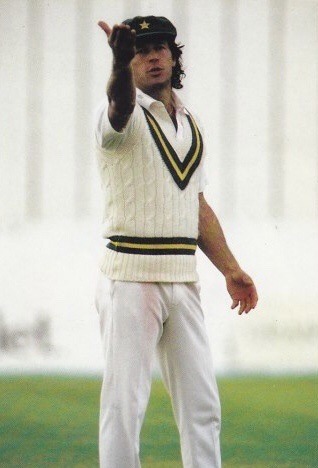
No wonder then that one of Khan’s heroes was former Australian captain, Ian Chappell. Like Chappell, Khan regularly applied tactics involving mind games.
For example, when he managed to bring back Abdul Qadir from oblivion for the team’s 1982 tour of England, he told the British press that there has never been a trickier leg-spinner than Qadir. He then asked Qadir to grow a ‘wizard’s goatee’ so he would look like a mysterious magician.
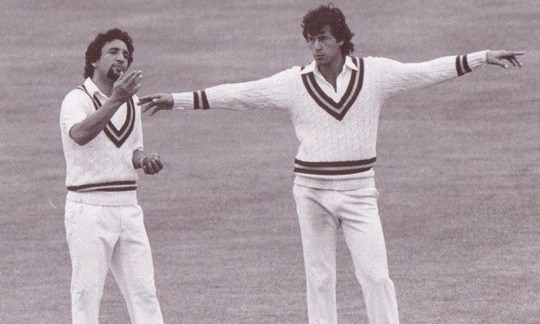
During an ODI tournament in Australia in 1986, Khan advertised all-rounder, Manzoor Elahi, as being ‘perhaps the hardest hitter of the cricket ball in the world.’ Of course, he wasn’t.
In 1989, while playing an international ODI tournament in India (that Pakistan won), Khan (to distract the Indian team), told the press that the issue of Kashmir should be resolved and settled (between India and Pakistan), on the cricket field!
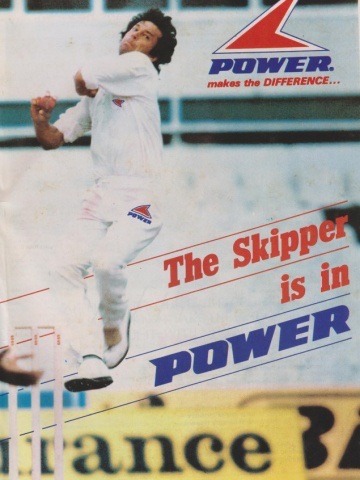

Players found him to be uncompromising and stern on the field, but also remember his captaincy to be a ‘very fun period’ in their careers.
Khan finally wrapped up his career by leading Pakistan to win the 1992 World Cup in which his vice-captain, Javed Miandad, and he played pivotal roles.
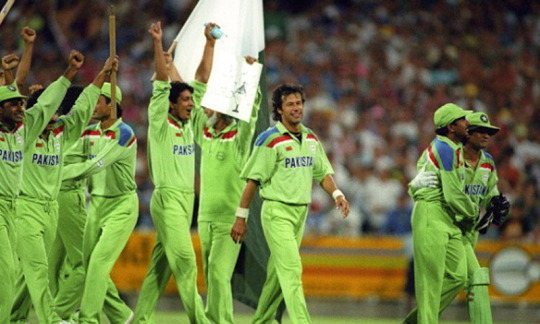
Imran retired immediately after the World Cup, aged 41.
Captaincy Record (1982-84/1986-88/1989-92):
Tests: 14 won, 8 lost, 26 drawn.
ODIs: 75 won, 59 lost, 1 tied, 4 no result.
0 notes
Text
[ad_1] Source ( Sharjah cricket ground) For the last many years, one has indulged in watching Sachin Tendulkar’s ‘Desert Storm’, Javed Miandad’s six in the Austral-Asia Cup, Gavaskar’s catches in the Rothmans Cup or Brian Lara smacking Waqar Younis, time and again. Perhaps there is some unknown force that makes cricket lovers recount the unforgettable moments. Incidentally, all those memories are synonymous with one stadium – The Sharjah Cricket Ground. Before the India-Australia T20 World Cup game, all those momentous occasions gushed forth while taking a tour through the Sharjah stadium. Initially, the eyes zoomed in on a photo that dates back to somewhere in 1982. It could be one of those meetings held by the head-honchos of all the various Asian Cricket Boards before the formation of ACC in 1983. The nostalgic photo comprises Abdul Rahman Bukathir, the brain behind Sharjah becoming the hub of cricket in the 1980s and 1990s. KS Rungta, Noorani, IS Bindra, SK Wankhede, MA Chidambaram, A Sajjad and a few other notable administrators can also be seen. As you turned towards the left side of the room, the walls were adorned with a galaxy cricket stars. There is an iconic image of Kapil Dev, the India skipper, and Viv Richards, the West Indies captain, being pictured together during the toss at the Rothmans Cup in 1985. Beside it is a photo of Lara employing the flick shot. For a second or two, one wondered whether it is related to the same match where Lara took apart Waqar. However, a closer look confirmed that it is from the 1995 Sharjah Champions Trophy. Most likely it is from the Sri Lanka-West Indies encounter, where Hashan Tillakratne reigned supreme with a valiant hundred. One of those occasions when Lara cracked a sparkling 169 and still didn’t hog the limelight. Surrounding Lara’s photo-frame are a few more legends of the game – Imran Khan, Gavaskar, Zaheer Abbas and Kapil. All of those memorabilia are from either the inaugural Rothmans Cup or its second edition. Obviously, a few pictures from the ‘Desert Storm’ too adorn the wall. There is one photo each of Mark Waugh and Tendulkar – both from the same tournament in 1998. The lofted stroke that Tendulkar essayed could be the straight six off Michael Kasprowicz in the final, with the score reading 240. Incidentally, Tendulkar had later noted a couple of shots early on in the innings off Kasprowicz helped him to rediscover his batting rhythm. Wasim Akram (Austral-Asia Cup, 1986) Graham Thorpe (1997-98, Coca Cola Cup), Darren Gough (circa 1999) and Curtly Ambrose loading up (1999-00) also decorate the walls of the room. The one missing link in the room was Aaqib Javed. The man who gave plenty of heartbreaks to India at this ground. Around 23 years ago, Javed had decimated India in Sharjah with figures of 7 for 37. He even took a hat-trick in that game. Fast-forward to modern times, and you will observe the IPL and PSL-related pictures. In addition to 100s of photos, there are signed bats as well. One of them is the 1996 World Cup winning squad’s signed willow. Probably, those signatures were taken when Sri Lanka played a tournament, in Sharjah, at the fag end of that year. Other signature cricket bats include, England’s tour of the UAE in 2015, Australia’s tour in 2009 and West Indies’ trip to the same region in 2016. For around half an hour, it was about transporting yourself back to a bygone era. It was an enriching experience. Another update regarding Indian cricket: Rohit Sharma says the Indian team doesn’t want to take an undercooked Mohammed Shami to Australia. The question is, can the veteran turn the clock back. It’s perhaps prudent for the team to look beyond him@atreyom #INDVSNZ #mohammedshami https://t.co/U3xALe8Bz7 — RevSportz Global (@RevSportzGlobal) October 15, 2024 For more sports content: https://revsportz.in/ The post Over four decades of cricket in Sharjah – A journey through Javed Miandad’s six and the ‘Desert Storm’ appeared first on Sports News Portal | Latest Sports Articles | Revsports.
0 notes